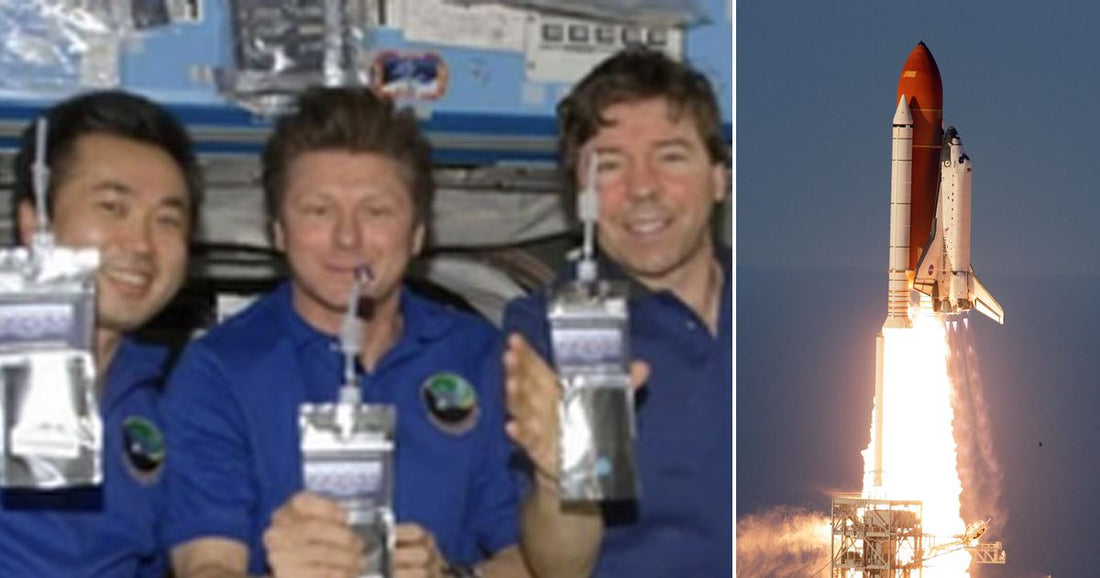
How Do Astronauts Survive Months On End Without Resupplied Water?
Share
After a little layoff.... WE'RE BACK!
With another edition of Ask ARSE.
The game where our followers in the Australian Space Society prod us with questions about the deep unknown...
This week, reader Dave asks...
"Hey I was wondering how the astronauts on the ISS survive for so long with no water?"
Well, strap in Dave and dear readers this is going to get disgusting...
Let's get pissed...

Transporting anything to the space station is extremely expensive—launching a SpaceX rocket costs about $5554 AUD per kilogram.
And you know what’s really heavy?
Water.
Tanks of H20 can't be constantly shipped up to the International Space Station, so the station has a complex water system that squeezes every last drop of available, drinkable liquid out of the environment.
'THE ENVIRONMENT...'
And what's in the 'environment'?
Breath.
Sweat.
Old shower water.
And urine.
Not just from the people on board, but the research animals too...
Thankfully, the station also keeps about 530 gallons of water in reserve in case of an emergency. Personally I think drinking Jeff's sweat, breath and piss cocktail mixed with a lab monkey's is an emergency. But whatever...
The NASA water systems on the ISS collect moisture from breath and sweat, urine from people and research animals, and runoff from sinks and showers to keep the station hydrated. “It tastes like bottled water, as long as you can psychologically get past the point that it’s recycled urine and condensate that comes out of the air,” Layne Carter, who manages the ISS water system from the Marshall Flight Center in Alabama.

American water is transported in CWCs (Contingency Water Carriers). These are Nomex bags with combitherm bladders. They can be sent up in any of the commercial cargo vehicles and in the Japanese HTV cargo vehicle.
Russian water is transported via two different mechanisms. There are water tanks in the Progress cargo vehicle. There are also metal canisters, called EДВ. Within the Russian service module, there are tanks called Rodnik that hold a 45-day contingency supply. Water for nominal use usually comes from EДВ.
The amount of water carried depends on the level of the supply onboard the ISS and on the available cargo mass in the cargo vehicle. Cargo vehicles are sent up about once a month or so.
Astronauts mainly drink water while in space, but flavoured drinks are also available. Freeze-dried drink mixes such as coffee or tea, lemonade and orange juice are provided in vacuum sealed pouches. The astronauts then add water to the beverage pouch through the pressurised hose and suck the drink through a straw.
Also, astronauts on the International Space Station are testing a new way to drink filtered pee. Aquaporin A/S, a Danish biotech company, has developed a filter that uses aquaporin proteins to pull clean water out of urine, sweat, wastewater, condensation and other liquid sources available in space.
But it's literally still piss, with less monkey sweat and old shower water...
The takeaway: Astronauts get on the piss more than you realise.
Thanks for reading and while we're on the subject.
Check out www.spacesociety.com to involve yourself in the inner ring of ARSE.




